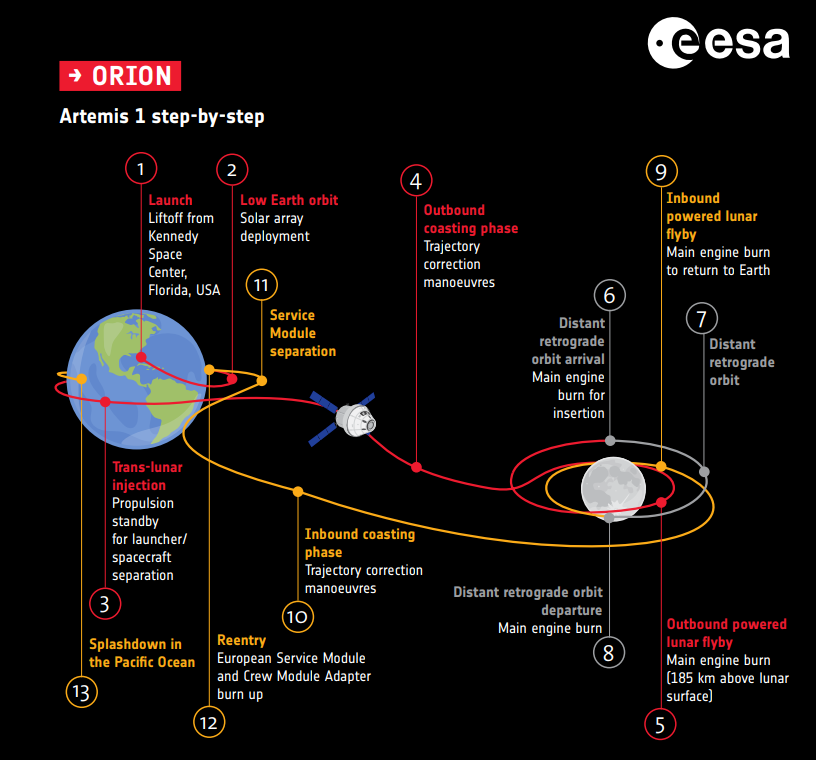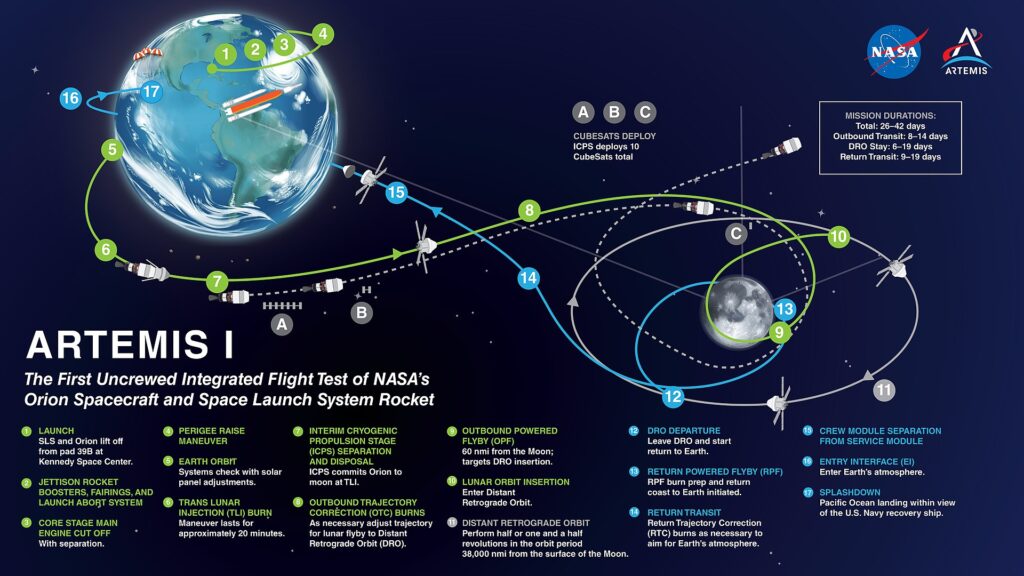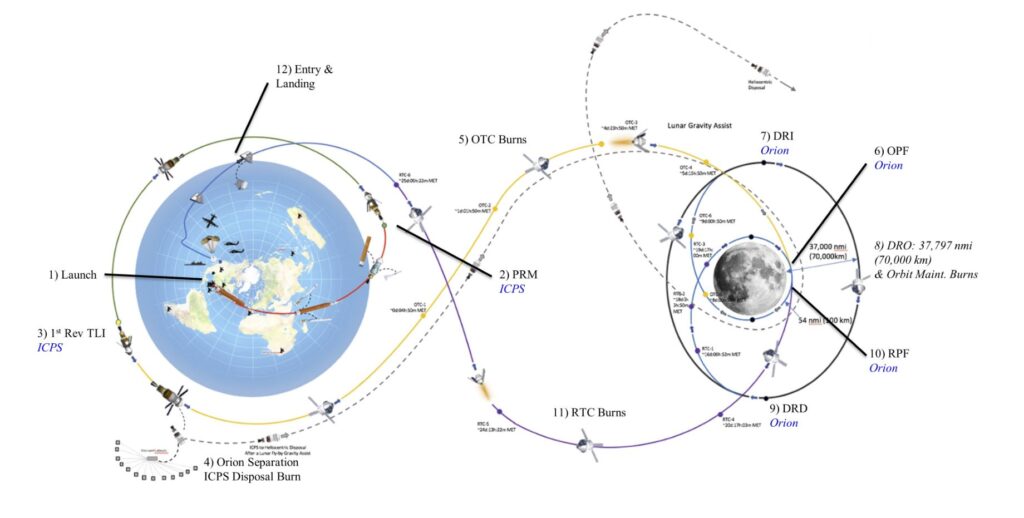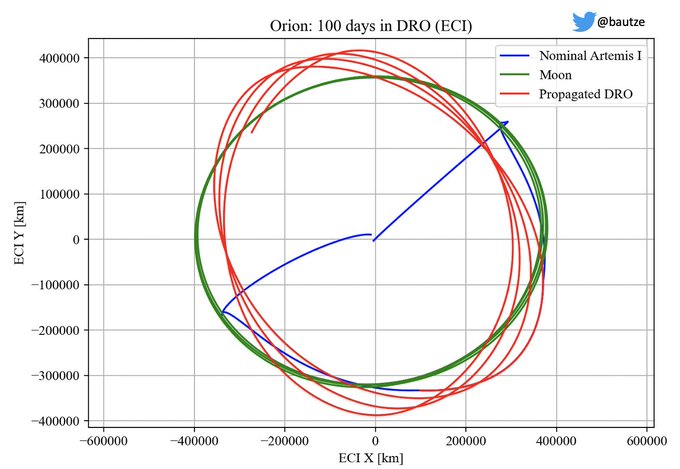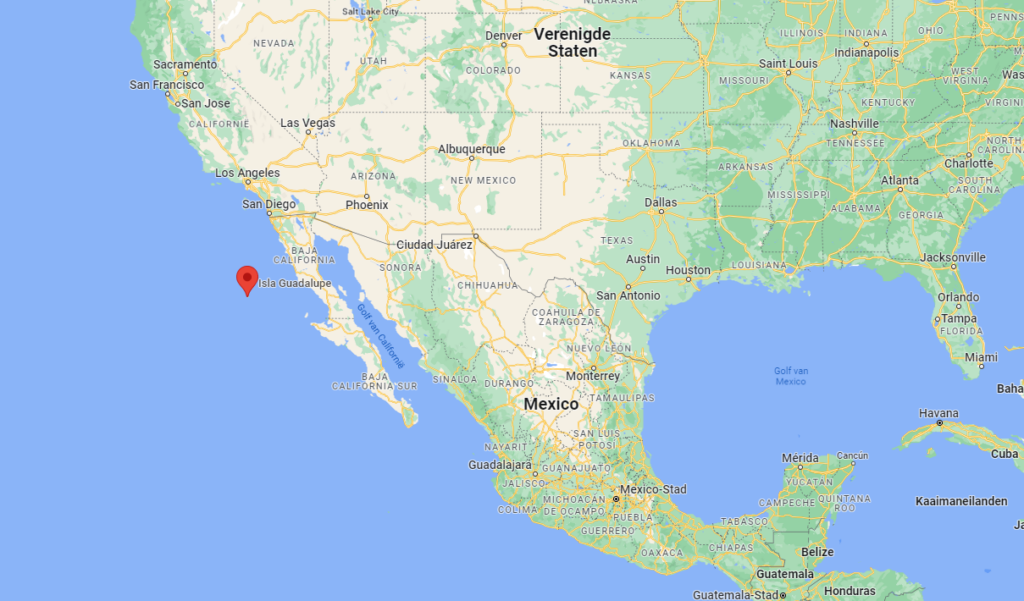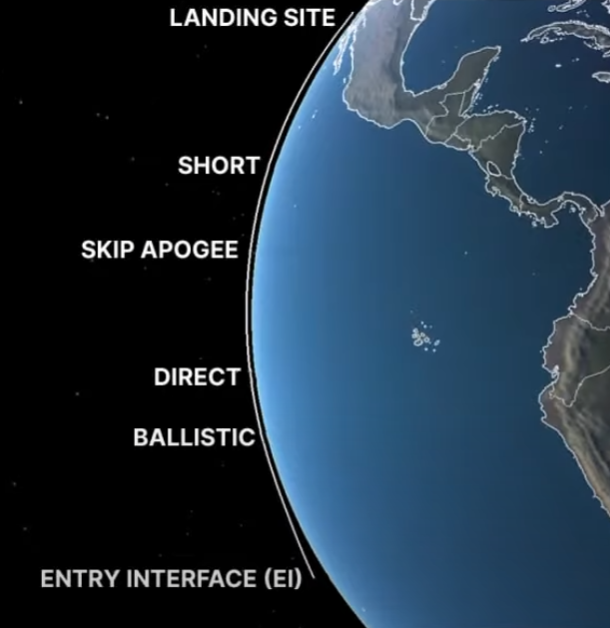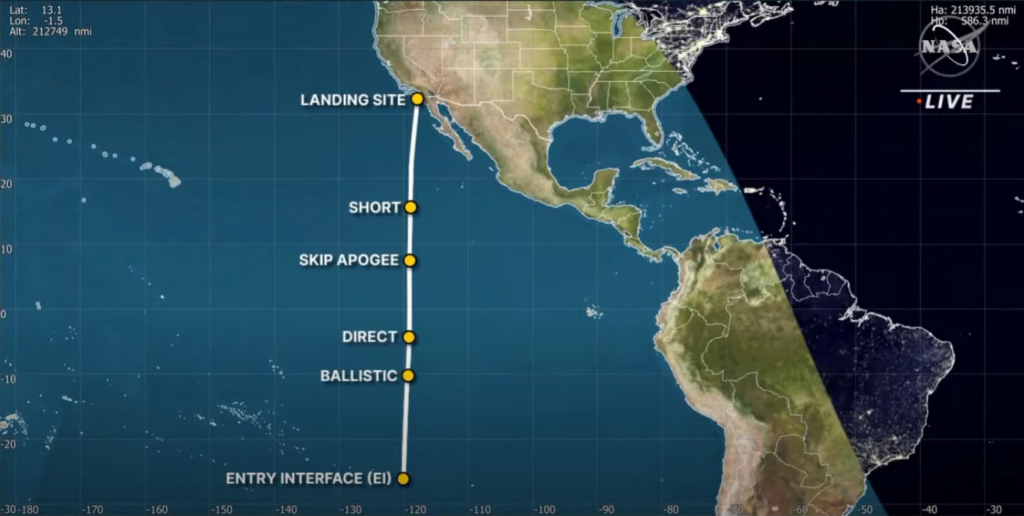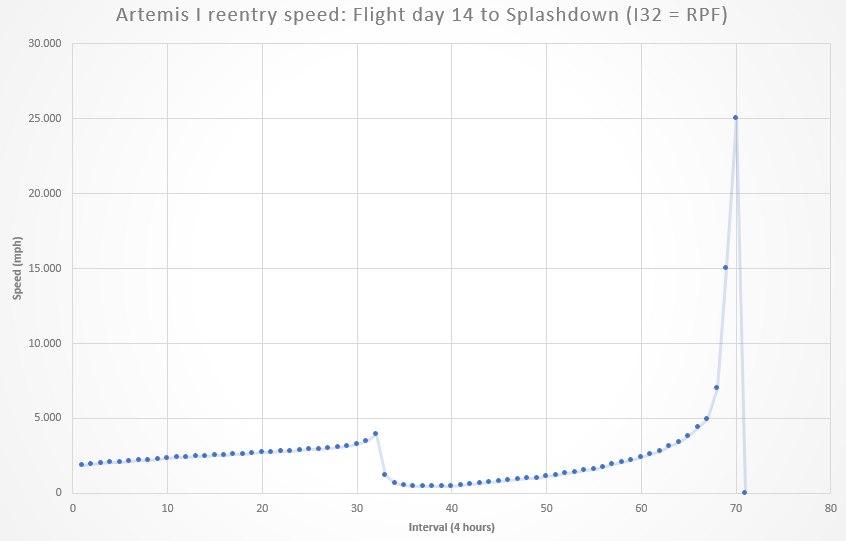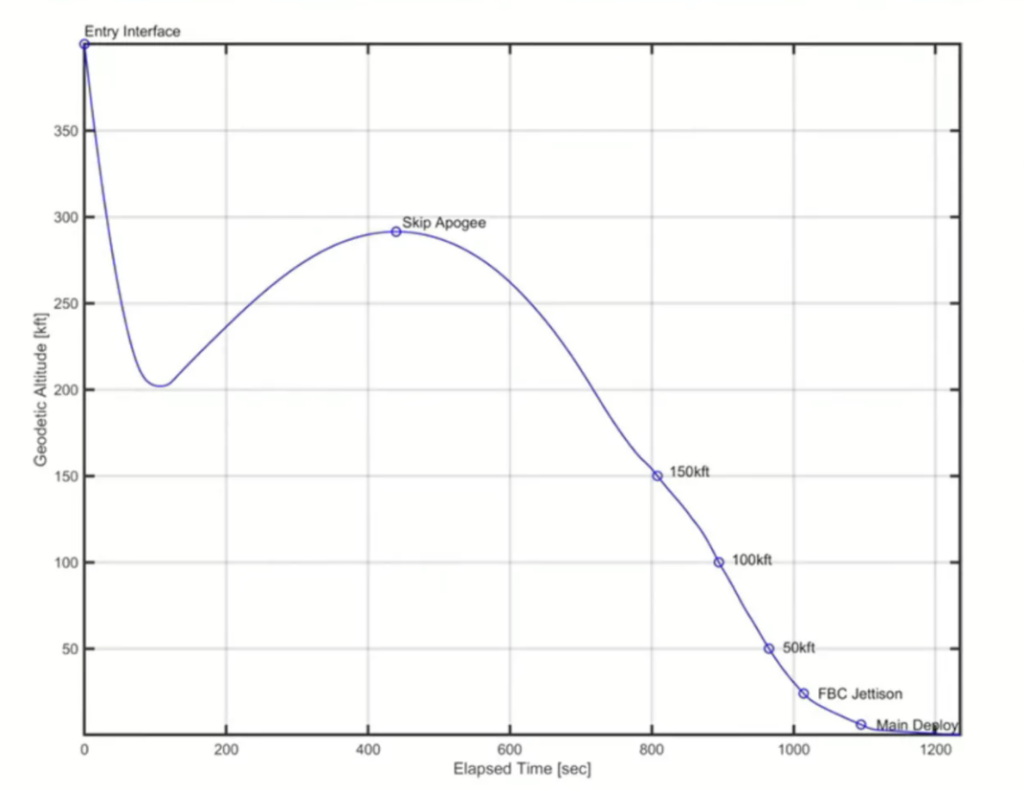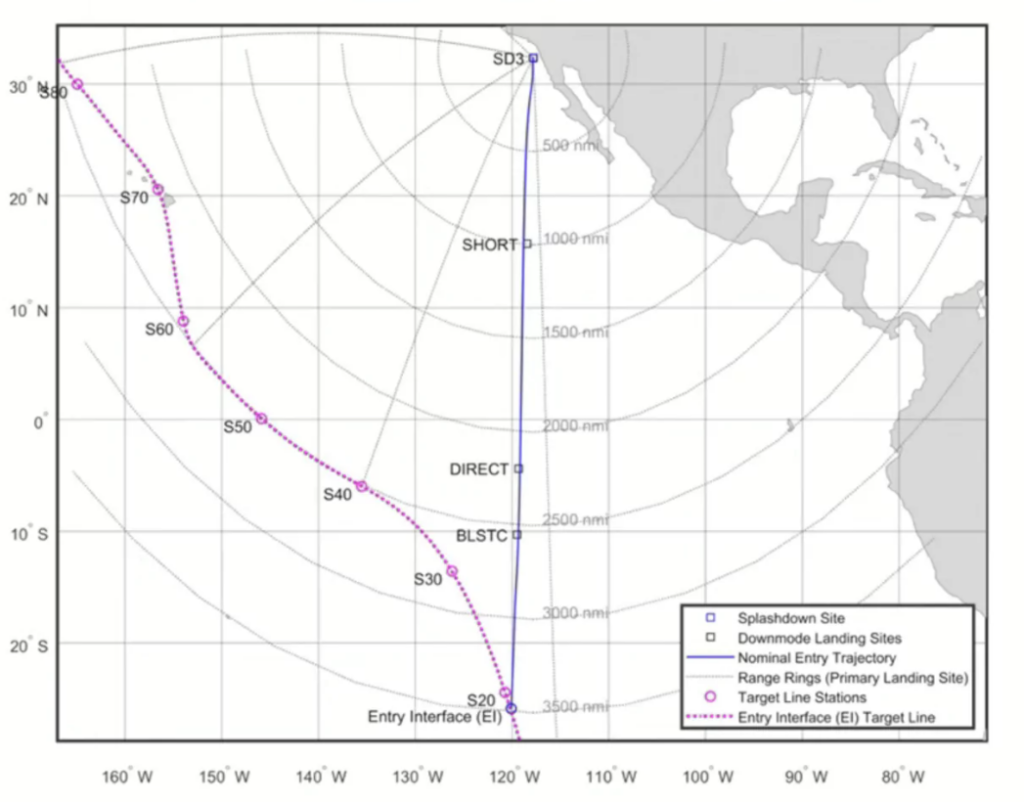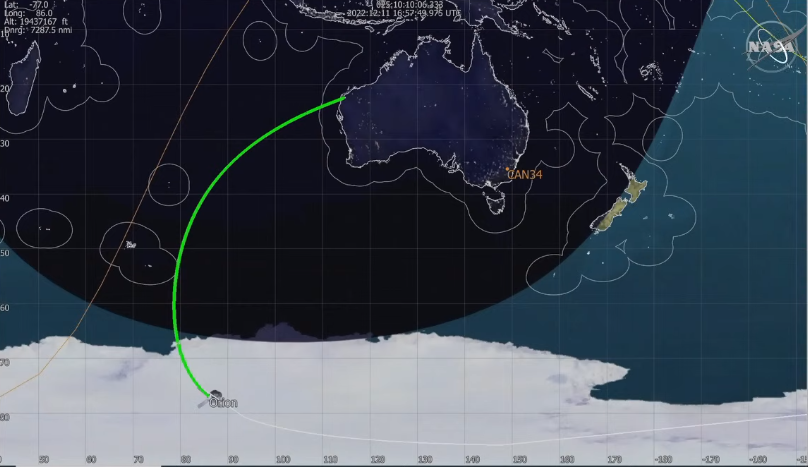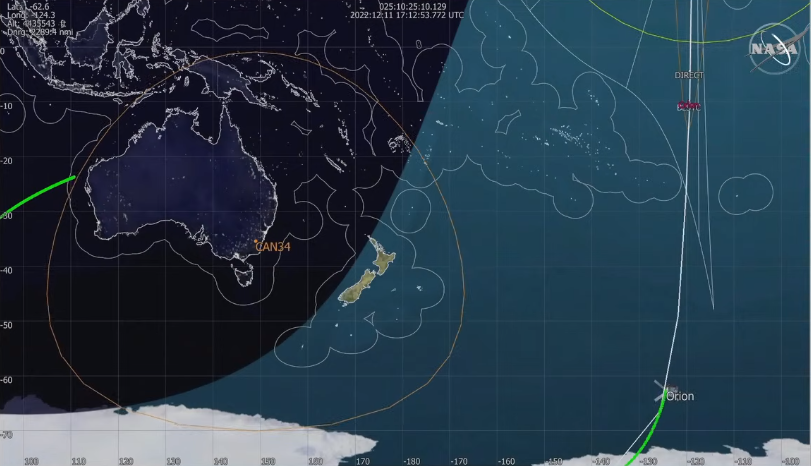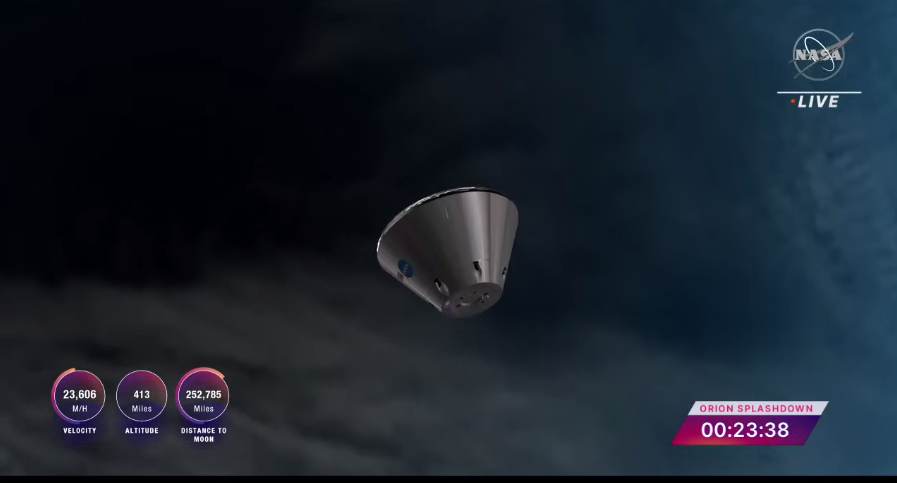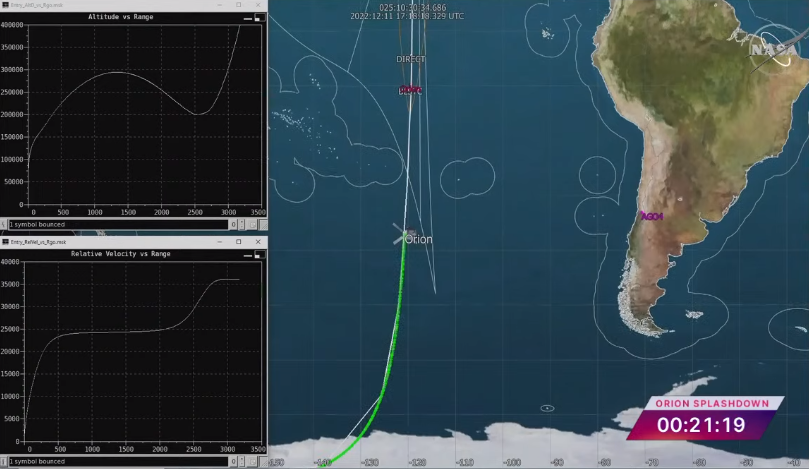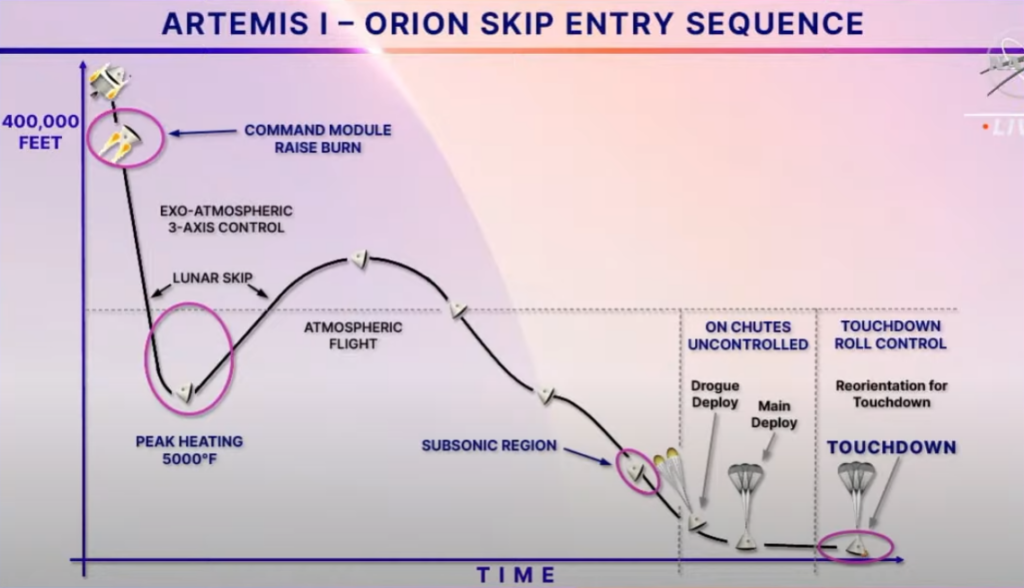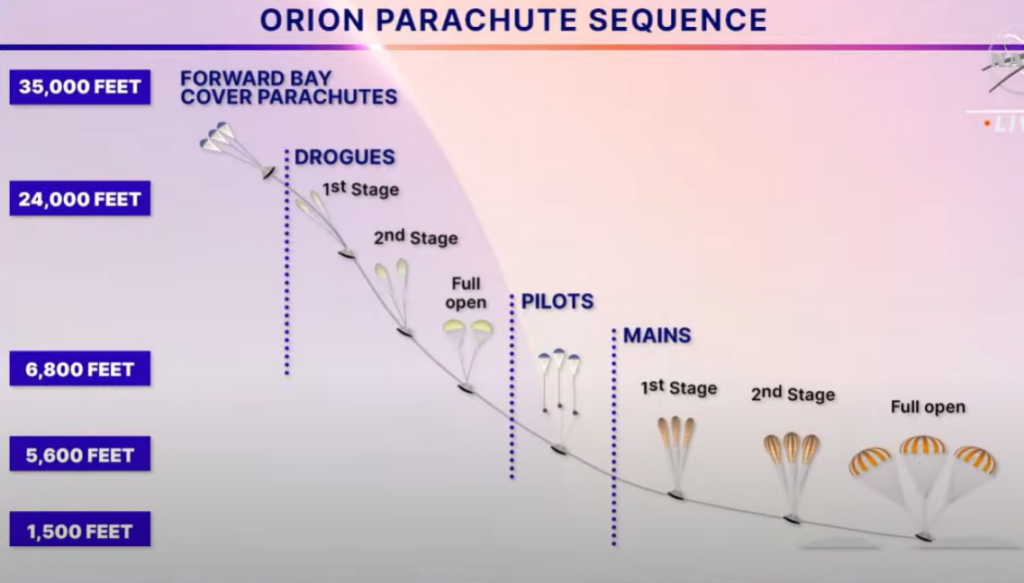Artemis I trajectory
Artemis I trajectory animation
Blue = the Earth
Green = the Moon
Purple = Artemis I
Date
Artemis I speed
Artemis I distance from the Moon
Reentry
Groundtrack
Skip entry and parachute sequence
At 6:47:44 UTC (1:47:44 am EST) on November 16, 2022, Artemis 1 successfully launched from Launch Complex 39B at the Kennedy Space Center. It was the first time in nearly 50 years that NASA has launched a rocket intended to travel to the Moon, the last time being Apollo 17. This launch also marks the first time since Ares I-X that a rocket has launched from Launch Complex 39B. The Orion spacecraft and ICPS were both placed into a nominal orbit after separating from the Space Launch System, achieving orbit approximately 8 minutes after launch.
Eighty-nine minutes after liftoff, the ICPS fired for approximately eighteen minutes for a trans-lunar injection (TLI) burn. After that, Orion separated from the expended stage and fired its auxiliary thrusters to move safely away as it started its journey to the Moon. The ICPS then deployed 10 CubeSats as secondary payloads from the Orion Stage Adapter. A final burn was completed at three and a half hours after launch to dispose itself into a heliocentric orbit.
On November 21, 2022, Orion lost communication with NASA as it passed behind the Moon from 12:25 through 12:59 UTC. There, during an automatically controlled maneuver, the first of several trajectory-altering burns, called an “outbound powered flyby burn”, to transition Orion to a distant retrograde orbit began at 12:44 UTC. The orbital maneuvering system engine fired for two minutes and thirty seconds. While still autonomous, Orion made its closest lunar approach of approximately 130 km (81 mi) above the surface at 12:57 UTC. The spacecraft performed another burn on November 25, firing the orbital maneuvering system (OMS) for one minute and twenty-eight seconds, propelling Orion to 363 ft/s (398 km/h) finally entering orbit. On November 26, at 13:42 UTC, Orion broke the record for the farthest distance from Earth traveled by an Earth-returning human-rated spacecraft. The record was formerly held by the Apollo 13 mission at 400,171 km (248,655 mi).
Footnote
- Sources: Aerospace dashboard, funkystuff.org
- Outgoing: NASA
- Keywords: graph, graphic, map, course

